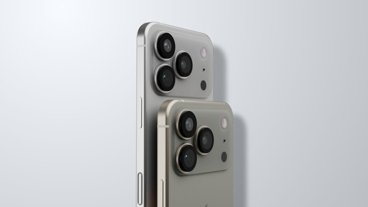While the iPhone 16 will still have Bluetooth 5, the new Bluetooth 6 is officially on the way, with the new features including one that may bolster Find My.
Bluetooth is an important communications technology, enabling hardware like the iPhone and iPad to connect to accessories and other devices. While the world has been using Bluetooth 5 since 2016, a newer version is on the way.
Released on Tuesday by the Bluetooth Special Interest Group, the updated Bluetooth Core Specification brings the standard up to version 6. One that introduces a number of feature changes that improve how the technology functions.
Bluetooth Channel Sounding is a key update, as it improves distance awareness between two compatible devices. Much like Ultra Wideband, it will be able to tell the distance between devices, which could impact apps like Apple's Find My or digital key systems.
Faster pairing
Decision-Based Advertising Filtering, extends Bluetooth Low Energy's Extended Advertising feature across two radio channels, to help with pairing devices. Typically in pairing and some other tasks, an accessory sends out packets of data to advertise itself to other hardware, in order to establish a connection.
Under the new version, a device will detect a packet on a primary advertising channel, then determine if it should scan for related packets on the secondary channel. This should speed up searching for hardware since it can cut out secondary channel scanning if it's not required.
Connected to this is the Monitoring Advertisers feature, when a host instructs the Bluetooth controller to filter any duplicate advertising packets it receives. This current implementation is inefficient, as since the host only works from one packet of data, it is unknown whether the connection is still viable after that point unless it scans again.
The updated version will use Host Controller Interface events that will tell the host if the target hardware related to the packet is still in range, or if it has moved out of range.
Better connectivity
The Isochronous Adaption Layer (ISOAL) allows for larger data frames to be transmitted using smaller link-layer packets, complete with associated timing information to aid with reconstituting the received packets. These can be made as framed or unframed protocol data units (PDU), but framed versions can introduce latency.
Under Bluetooth 6, it's improved with a new framing mode that reduces latency in some specific use cases, as well as increasing reliability.
The LL Extended Feature Set helps devices exchange information about link-layer features they support. It's been updated to support larger numbers of features, to match how Bluetooth LE itself has grown over time.
Lastly, the Frame Space Update makes a change to how connection event and connected isochronous stream subevent packet transmissions are timed. Previous specifications defined the use of a constant time value between packet transmissions, limited to 150 microseconds.
Under Bluetooth 6, this timing is negotiable between devices, allowing it to be shorter or longer. This can be extremely useful for applications such as audio or gaming, among others.
Announced, but not available
Despite the announcement of a new core specification for Bluetooth, no one will be able to use it in a commercial product in the immediate future. Hardware and software has to be produced that follow and actively use the standard's definitions, which can take time.
Apple does frequently adopt newer standards with its product releases, but even this can be a very long time after the announcement. For example, Bluetooth 5 was announced in June 2016, but it didn't use Bluetooth 5 in an iPhone until the 2017 iPhone X.
Based on this timeframe, the iPhone 16 certainly won't support Bluetooth 6, but the iPhone 17 stands a very good chance.
 Malcolm Owen
Malcolm Owen


 William Gallagher
William Gallagher


 Amber Neely
Amber Neely
 Oliver Haslam
Oliver Haslam
 Thomas Sibilly
Thomas Sibilly
 Marko Zivkovic
Marko Zivkovic



-m.jpg)






1 Comment